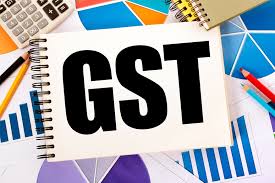The centre must look within to deal with investment hesitancy
The Indian private sector is like the impassive mate, spurning every romantic overture despite tender ministrations and whispered blandishments. Corporate India has been the subject of the Indian government’s repeated coaxing and cajolery, but has remained unmoved. What could possibly be wrong? Understanding this, and drawing lessons from it, could perhaps be useful in creating healthcare infrastructure for the future.
Over the past few years, the government has tried unsuccessfully to get the private sector to invest, even acceding to its multiple demands and offering it many incentives. Yet the Indian private sector has refused to increase investments in additional brownfield or greenfield capacity. Private sector investment has not completely evaporated but has been dropping continuously over the past 5-6 years.
The Economic Survey for 2020-21 shows that gross fixed capital formation in the private sector never really recovered from its peak of 27.2% of gross domestic product (GDP) in 2011-12, thereafter hovering at 21-22% every year from 2015-16 to 2018-19, the last year for which the survey has capital-formation data. During this period, though, GDP has more than doubled.
The government, in fact, has gone to extraordinary lengths to meet India Inc’s demands. In an interaction with the All India Management Association on 20 February, finance minister Nirmala Sitharaman asked industry to unleash its animal spirits: “We need capacities to be ramped up, we need expansion, we need more production of very many such products, which are so required for the economy." On 5 March, Prime Minister Narendra Modi exhorted industry: “I would again urge you to convey to me whatever problems you are facing, whatever your suggestions are on reforms with an open mind. The government is prepared for every suggestion and will solve every problem."
In keeping with this unwavering placatory narrative, the government has gone to some lengths to meet India Inc’s long-standing demands. Two examples stand out.
For the longest time, industry has been crying hoarse about the need for lower interest rates, especially after former Reserve Bank of India (RBI) governor D. Subbarao raised interest rates 13 times on the trot; large companies and industry lobbies used every platform to paint doomsday scenarios of the Indian industrial edifice collapsing without lower interest rates. The government thus put its considerable weight and influence to work on RBI and pushed interest rates to a historic low. Even former governor Urjit Patel was not spared when he raised interest rates or tightened insolvency laws to punish loan defaulters. His successor Shaktikanta Das cut RBI’s benchmark repo rate of interest by 2.5 percentage points between February 2019 and May 2020, while maintaining excess liquidity in the system.
While this has failed to move the needle, it has helped many large corporate debtors lower their interest outgo.
High corporate tax rates were cited as another impediment, though the reality is different. According to annual budget documents, the average statutory rate—based on the weighted average of corporate tax rates for a particular income bracket and the number of companies in that cohort—was 34.58% in 2018-19, against 34.6% in 2017-18. But, more importantly, the effective tax rate, after availing concessions and exemptions, works out to 27.81%, against 29.49% the previous year. These rates—both statutory and effective—are expected to drop further because corporate tax rates were slashed twice thereafter, the last time in the budget for 2021-22. But falling tax rates have failed to enthuse corporate India.




Comments
Post a Comment